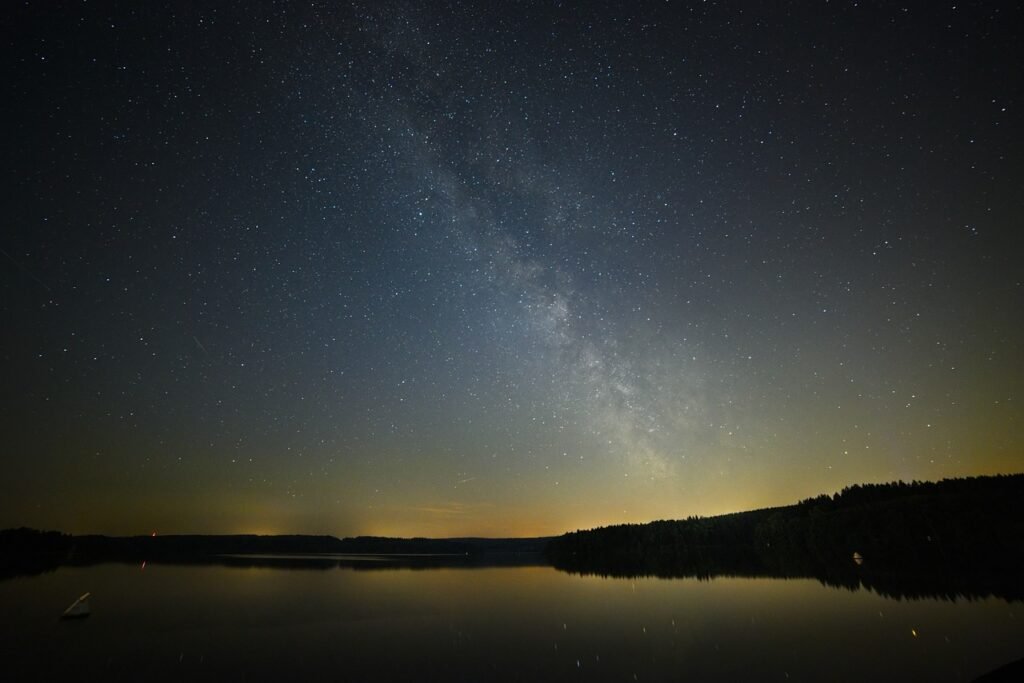Everything you wanted to know about the Milky Way

The Milky Way, a cosmic masterpiece, unfolds its celestial tapestry across the vast expanse of the universe. Spanning approximately 100 thousand light-years, this majestic galaxy encompasses over 200 billion stars, with a mysterious black hole reigning supreme at its center. Let’s delve into the intricacies of our galactic home and explore the cosmic wonders within.
The Milky Way’s Stellar Ballet: A Symphony of Stars and Nebulae
Our galaxy, a spiral beauty, radiates its brilliance as a bright band of light in Earth’s night sky. Boasting a family of spiral galaxies, the Milky Way’s core gives rise to two majestic arms of stellar material, gracefully curving around its center. Within these spiral arms, rich in interstellar dust, the cosmic dance of star formation unfolds, contributing to the galaxy’s staggering count of 100 to 200 billion stars. At the heart of this celestial ballet lies a colossal black hole, shrouded in cosmic mystery.
Charting the Unknown: Studying the Milky Way’s Secrets
Investigating the Milky Way poses a unique challenge, given that Earth and the Sun reside within its cosmic embrace. Grains of interstellar dust act as cosmic veils, absorbing visible radiation and scattering it, compelling astronomers to explore the galaxy’s secrets through alternative spectrum areas, such as radio waves.
In the late 1940s, the revelation that hydrogen atoms emit radio waves at a distinctive wavelength of 21 cm opened new avenues for exploration. By observing these radio waves, astronomers could map the distribution of hydrogen, unveiling the galaxy’s structure. The Milky Way, born from the contraction of a rotating cloud of gas, has evolved into a dazzling spectacle of globular clusters, flat disks, and interstellar material.
The Milky Way’s Cosmic Neighborhood: A Galactic Family
Our cosmic abode is a vibrant neighborhood, housing at least 100 billion stars, each potentially hosting planets, moons, comets, and asteroids. Nebulae, remnants of exploded stars and celestial nurseries, further enhance the cosmic landscape. The Milky Way, seen as a pale streak from Earth, is but a partial glimpse, akin to viewing a high-rise building from within.
The analogy of residing in a high-rise offers a perspective shift — from within, only a fraction is visible. Venture outside, and the full grandeur unfolds. Similarly, the Milky Way, observed from a cosmic distance, reveals its spiral arms in a characteristic vane-like structure.
Galaxies: Cosmic Oases in the Vast Cosmic Desert
Galaxies, often termed “star cities,” emerge as oases in the cosmic desert, where vast material concentrations give birth to stars, nebulae, and celestial bodies. Each galaxy, a self-contained universe, harbors over a hundred billion stars, separated by vast cosmic voids devoid of stellar presence.
Gazing into the Cosmic River: The Ancient Tapestry of the Milky Way
The name “Milky Way” traces its origins to ancient Greek mythology, where the goddess Hera’s spilled milk formed a luminous river in the sky. Galileo Galilei’s 1609 revelation, viewing countless faint stars creating a celestial halo, marked the first step in deciphering the galaxy’s true nature.
Spanning about 100,000 light-years in diameter and 1,000 light-years in thickness, the Milky Way dazzles with an estimated 200 to 400 billion stars, all engaged in an orbital dance around its center at a staggering 220 kilometers per second.
Journey Through the Cosmic Landscape: Galactic Arms and Satellites
The Milky Way’s spiral arms, including the Cygnus, Perseus, Orion, Sagittarius, and Scutum–Centaurus Arms, paint a mesmerizing celestial portrait. This galactic masterpiece is not solitary; it shares its cosmic neighborhood with approximately 20 satellite galaxies.
Among these satellites are the Large and Small Magellanic Clouds, dwarf galaxies like Ursa Minor, Leo II, Dragon, Tanor, Sextant, and Sedrit, forming a cosmic ballet around the Milky Way. This galactic ensemble, part of the “Local Group,” dances within the vast Virgo supercluster.
A Cosmic Symphony: The Solar System and Galactic Dynamics
Positioned about 26,000 light-years from the galactic center in Orion’s arm, the solar system enjoys a cosmic vantage point. The galaxy’s disk shape causes distant stars to appear densely packed, creating the luminous band we see from Earth.
The entire galaxy moves through space at 600 kilometers per second, with stars orbiting the center at a constant speed, defying gravitational expectations. Dark matter, an enigmatic substance, likely constitutes the invisible mass influencing galactic dynamics.
Gazing Into the Abyss: The Galactic Nucleus and Dark Regions
Within the Milky Way’s core lies a probable supermassive black hole, dictating the orbits of countless stars. Dark regions, like the Coal Bag Nebula, harbor interstellar dust clouds that obscure starlight, with the Sagittarius constellation marking the galactic center’s brilliance.
Cosmic Odyssey: The Ever-Unfolding Story of the Milky Way
As we peer into the cosmic tapestry of the Milky Way, we are captivated by its boundless beauty and celestial wonders. From the cosmic dance of stars and nebulae to the enigmatic nature of dark matter, our galaxy invites us on a perpetual journey of discovery. As we gaze into the cosmic river that is the Milky Way, we become witnesses to the ancient tales of spilled milk and the enduring fascination with the celestial marvels that grace our night sky.





